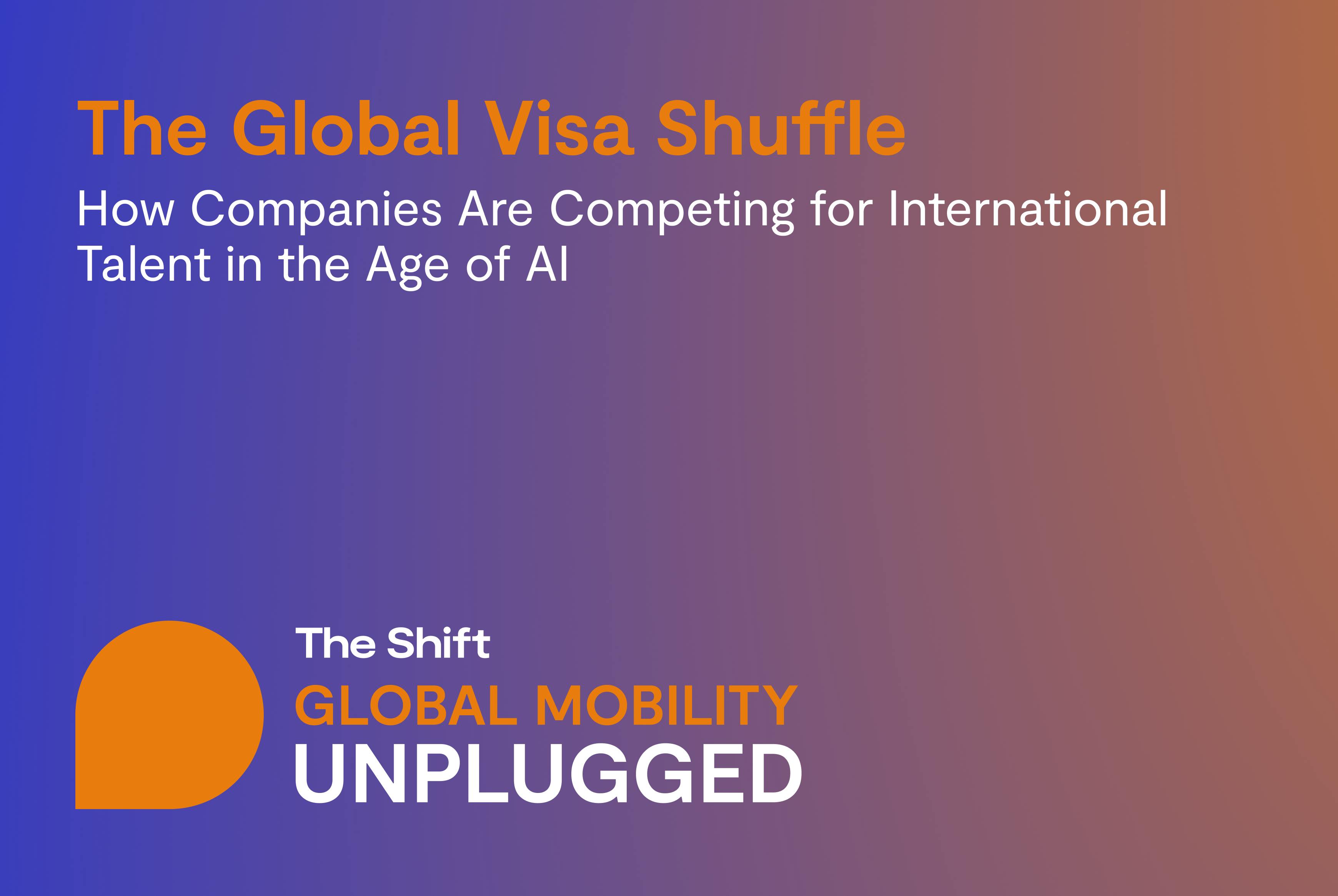The race for global talent has entered a new era, powered by artificial intelligence. But as AI transforms how companies source, attract, and hire across the globe, it's also exposing the deep cracks in outdated immigration systems. The result is a growing friction between technological innovation and bureaucratic inertia, where visa bottlenecks and unpredictable regulations stand in the way of progress.
One thing is clear in this new reality: global mobility can no longer be an administrative afterthought tacked on at the end of the hiring process. It has become a core strategic pillar of talent acquisition. To win the best talent, companies must now consider visas, compliance, and relocation from the outset, embedding a proactive, tech-led mobility strategy into the very fabric of how they build their teams.
The Changing Talent Landscape
The introduction of AI into the talent landscape is yet another radical change for global talent professionals. The COVID-19 pandemic in 2020 and 2021 compelled companies to adapt to managing a remote and global workforce. Just as things started to settle, AI went mainstream in late 2022 and early 2023. So, the last few years have brought unprecedented change, and some of it has been for the better.
In the case of AI, some of the new technology tools companies use can streamline their hiring and management of a global workforce. However, for all the promise of improved efficiency, these organizations are confronted with visa bottlenecks and ever-changing immigration and tax laws.
"Thinking about immigration rules, or tax rules, they tend to change nowadays very quickly, and not always with much notice," Mehmet Yiğit Yıldız, Global People Mobility Manager at Nordex Group, said in a recent webinar hosted by Localyze. "That is making it hard for companies to catch up."
Although AI tools have helped companies navigate these changes, government frameworks often lag behind and fail to accommodate modern work models, such as digital nomads and cross-border freelancers.
Reinventing Mobility Strategies for the AI Era
While immigration processes remain mired in regulatory unpredictability, AI is providing the foundation for companies to reinvent their mobility strategies. These new tools can expedite paperwork, but that's only part of their value. More importantly, some companies use AI to significantly reduce the risks associated with hiring across borders.
In the Localyze webinar, Mehmet also pointed out that AI tools can play a critical role in "automating compliance checks, flagging visa expirations, tax risks, and identifying policy mismatches" before they cause roadblocks in the hiring process. Localyze founder and CEO Hanna Asmussen said she has seen forward-thinking companies testing internal AI agents that can perform visa eligibility checks before an offer is even made. These tools have the potential to save time and prevent downstream complications. The real advantage of an AI-based mobility strategy is that compliance is baked into the very beginning of the recruitment process rather than being treated as a final hurdle to overcome.
AI's Impact on Hiring and Global Workforce Trend
AI is transforming the entire approach of some companies to global mobility, but its impact is most immediately felt at the top of the funnel, in hiring.
Eleonora Shepel, Senior Talent Acquisition Partner, says her team leverages AI to create a more efficient and asynchronous hiring process. By automating scheduling and using AI-powered pre-hiring assessments, her team can more effectively manage today's recruitment challenges.
"It allows us to be more efficient... even if we are a small talent team," Eleonora said. However, she also noted the other side to AI's widespread adoption. She says she has seen a significant increase in mass applications and even fraudulent CVs, where candidates use AI to fabricate work experience.
Beyond the hiring process, AI and other technologies are forcing a shift away from the traditional, rigid mobility models. Companies are increasingly questioning the need for costly and complex permanent relocations, which are now often reserved for leadership or highly strategic roles. Instead, businesses favor short-term assignments and business travel for collaboration without long-term commitment. There has also been a shift toward employer-of-record (EOR) solutions, which enable companies to hire talent quickly in new markets without the overhead of establishing a legal entity.
Policy and Compliance: What's Broken, What's Needed
It's clear that in this new era, the war for talent won't be won with paper-based visa systems. But no matter how much companies adjust their strategies or deploy AI tools, government policy and regulations need to catch up. When visa categories fail to account for cross-border remote work and digital nomads, companies end up forcing talent into ill-fitting boxes, perpetuating a vicious cycle.
So, what needs to happen to move forward? On the government side, more streamlined, digital, and predictable visa systems are desperately needed. If governments offered fully online visa application tracking, it would result in shorter appointment wait times and faster pre-hiring eligibility processes, among other improvements.
However, companies must also continue to adapt. Talent and mobility teams should be more involved in policy discussions. When they're not, mobility becomes an afterthought. The result is a misalignment between what the business needs, what is being offered to candidates, and what is actually possible from a compliance standpoint. By partnering with external experts, companies can develop the agile, compliant, and future-proof mobility programs necessary to win the talent race in the age of AI.
More Than the Latest Disruption to Hiring and Global Mobility
Hiring and global mobility professionals have weathered numerous storms in the past few years, but AI is more than just another disruption. The organizations that thrive will be those that embrace this change holistically. They will use technology not only to source and hire more efficiently but also to build more innovative and flexible mobility strategies.
Localyze can help your company navigate global mobility in the age of AI and through regulatory uncertainty. To get started, book a demo with Localyze today!

